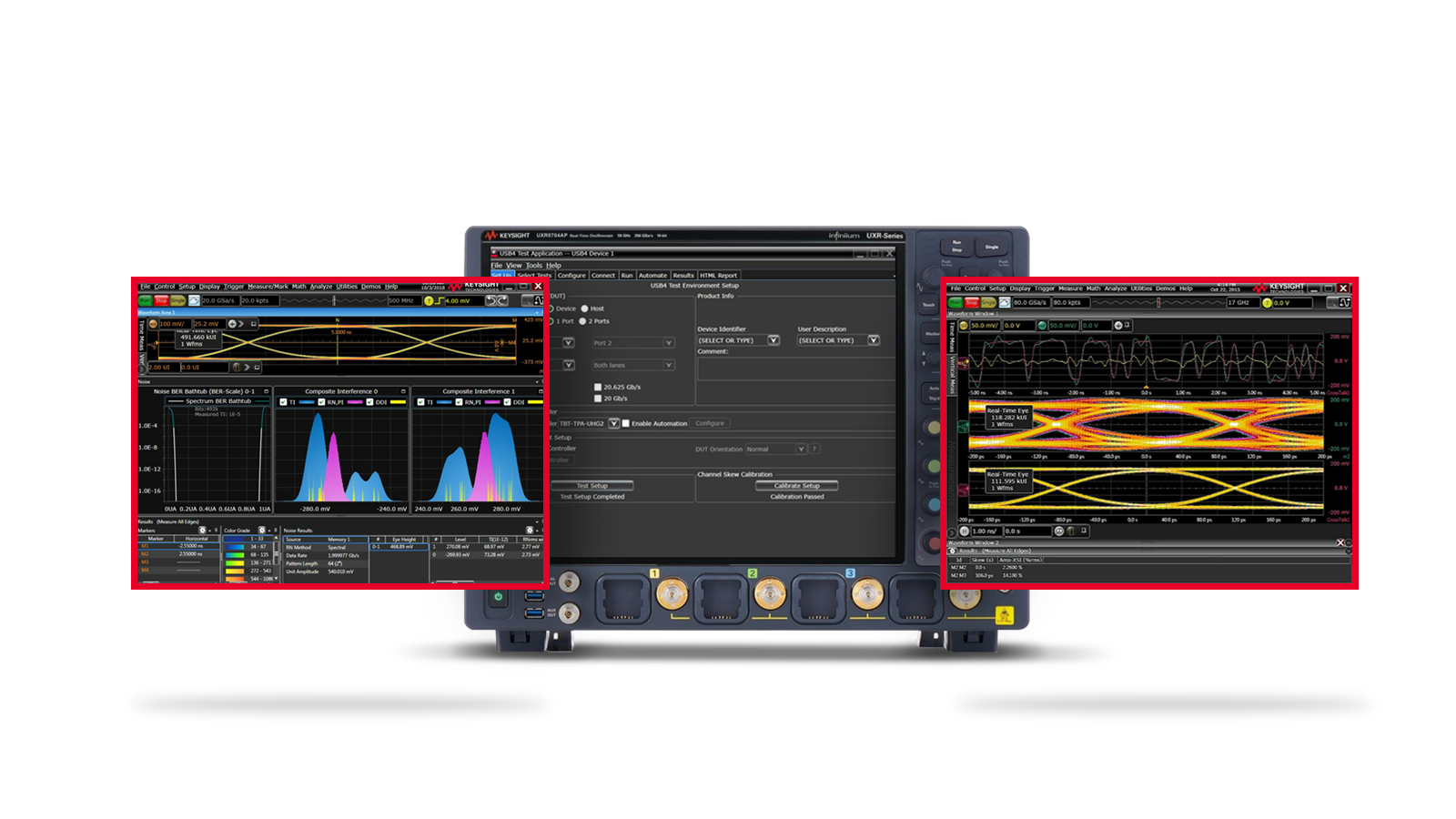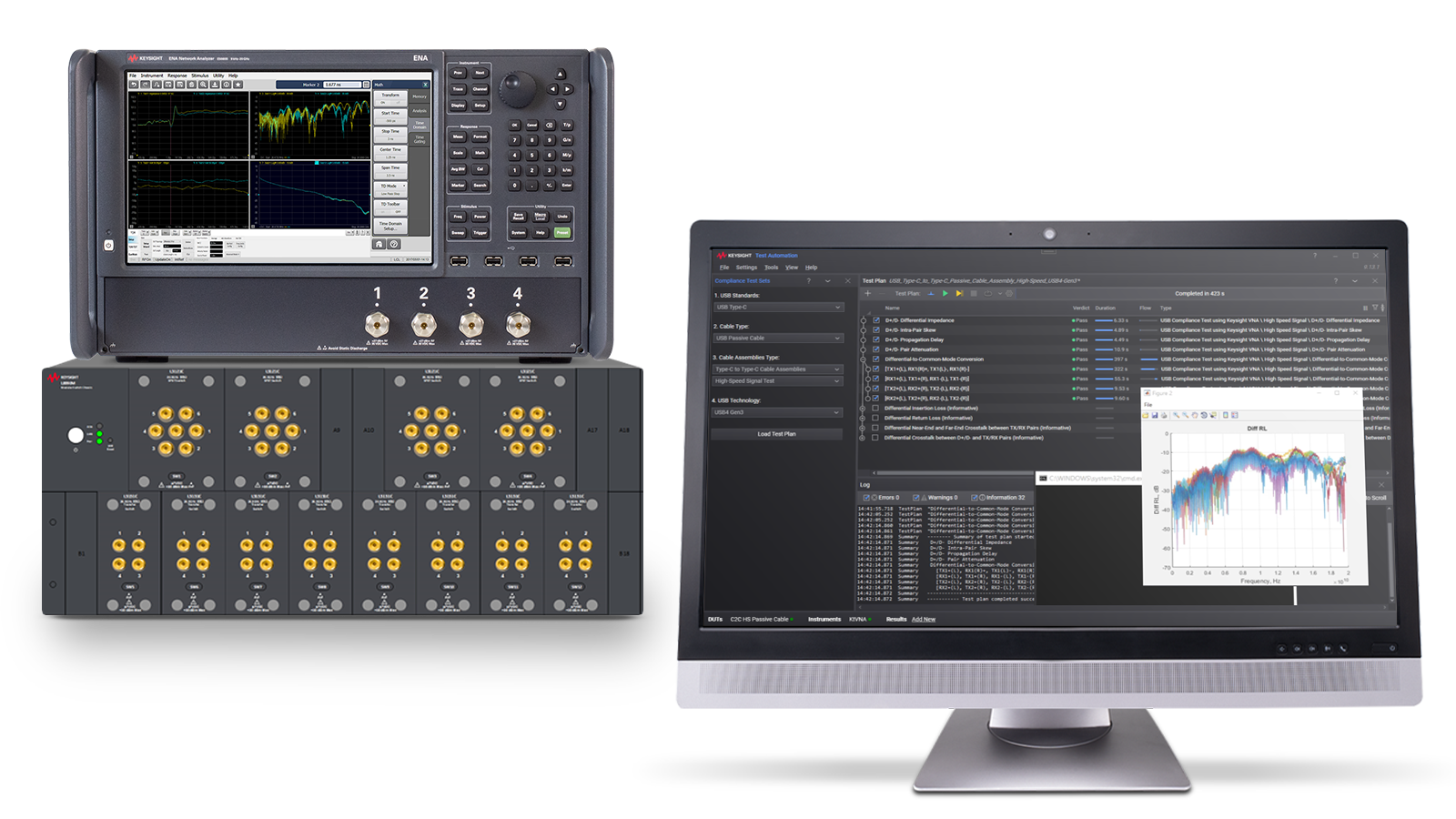O que você está procurando?
USB Design-to-Test Solutions
Learn the latest test requirements and solutions for USB4 Version 2.0 compliance.
End-to-End USB Type-C Workflow
The Universal Serial Bus Type-C (USB-C) is the most widely adopted interface in today's electronic devices, providing up to 80 Gb/s data rates and dynamic power up to 240 W with USB4 Version 2.0 signaling.
We can help you thoroughly design and test your USB interfaces in accordance with the USB standard to ensure the interoperability of your devices.
USB Type-C®, USB-C® and USB4® are trademarks of the USB Implementers Forum.
USB Design-to-Test Solutions
Select the workflow stage below to learn about Keysight's end-to-end USB design and test solutions.
Design Simulation
Upgrading or integrating USB interfaces into your device is complex. You need to optimize the performance of your designs early in the development process to prevent costly re-design after the first prototype. Design and simulation of a USB interface involves characterization of the clock and data signals for the transmitter, receiver, and channel using various stress signals. We can help you maximize the performance of your USB designs and ensure their compliance with the USB standard.
Transmitter Compliance Testing
The USB Type-C connection includes four sets of transmit and receive (Tx/Rx) pairs. This enables one, two or all four channels to transfer data simultaneously at any time. USB4 Version 2.0 introduced asymmetrical 80 Gbps data speeds using PAM3 signaling over USB-C. These features and enhancements significantly increase the complexity of USB Tx/Rx conformance testing. Automated compliance test software can help you quickly and accurately validate your USB interfaces.
Cable and Interconnect Testing
Several variations of USB cables are used to connect and power devices: USB Type-C, Type-A, Type-B, Micro, Mini, and others. USB has evolved from a simple 4-pin connection for power and data to USB Type-C, which is asymmetrical, reversible, and highly-functional 24-pin connection. We can help you understand how to ensure successful USB Type-C integration into your devices and meet compliance.
Receiver Compliance Testing
The USB Type-C connection includes four sets of transmit and receive (Tx/Rx) pairs. This enables one, two or all four channels to transfer data simultaneously at any time. USB4 Version 2.0 introduced asymmetrical 80 Gbps data speeds using PAM3 signaling over USB-C. New equalization and return loss requirements also complicate USB receiver conformance testing. Automated compliance test software can help you quickly and accurately validate your USB interfaces.
USB Power Delivery (USB-PD)
USB-C incorporates a dynamic power system called power delivery (USB-PD). USB-PD's intelligent and flexible system-level power management supports bi-directional power that can switch direction for the connected provider (sourcing power) and consumer (sinking power) devices, supporting up to 240W of power delivery. We can help you ensure USB-PD safety, power integrity, efficiency, and interoperability in your devices.
USB Video Resources
Want help or have questions?










